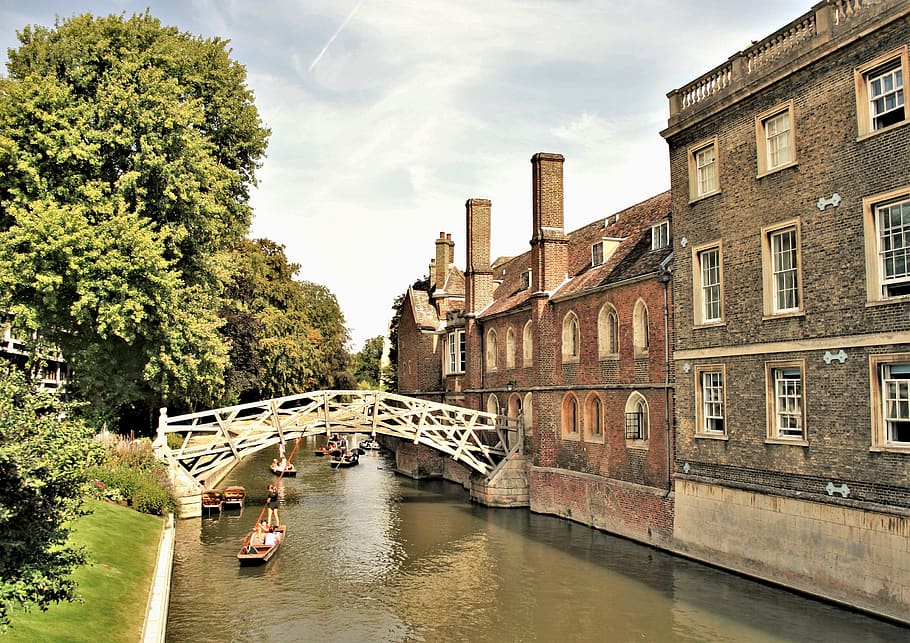リスク対応策 2021.10.01
RM67 キャプティブの「引力」(アイザック・ニュートン)Captive’s “gravitational pull “(Isaac Newton)
For those who prefer to read this column in English, the Japanese text is followed by a British English translation, so please scroll down to the bottom of the Japanese text.
「トラファルガー海戦」の勝利を記念して1805年に造られたロンドンの観光名所の一つ、「トラファルガー広場」。当初は同地が完成する直前に崩御した国王の名前から「ウィリアム4世広場」という名称であったが、建築家ジョージ・テイラー(George Ledwell Taylor)から「トラファルガー海戦の勝利を強く打ち出すには、名称は『トラファルガー広場』が良いのでは」との提案があり「トラファルガー広場」に変更になったと言われている。
トラファルガー広場が出来るまでこの一帯は王家の厩であった。1820年代、英国王ジョージ4世は、膨張するロンドンの街並みの整備とこの地域の再開発を建築家ジョン・ナッシュに依頼、20年余りの時を経て一旦完成したが、その後も改良が施されて続けている。

広場の中央には噴水がある。「年6回のロンドン出張」を始めた2000年頃、噴水は四方を道路で囲まれていたが、その後「ミレニアム記念のロンドン改造工事」が進み、「ナショナル・ギャラリー」(国立美術館)の入り口へ上る階段前の通りが塞がれ、ナショナル・ギャラリーから噴水まで一帯が大きな広場となった。この広場の中心には、トラファルガー広場の完成から約20年後、1867年に設置された巨大な4頭のライオンのブロンズ像に囲まれて建っている塔がある。トラファルガーの海戦に勝利、そして戦いのさなか戦死した総司令官、「ホレーショ・ネルソン提督を顕彰する記念碑(ネルソン記念柱)」である。この記念碑は、ライオンのブロンズ像より早く1843年に完成した。頂上に高さ5.5mのネルソン像を支える柱は高さ46mの大理石で出来ている。像は、南側、ウェストミンスター宮殿の方角を向いている。戦いに明け暮れた仇敵フランスを睥睨するようにネルソン提督の視線が注がれているのである。

江戸時代に創業した「三井呉服店」は、明治時代になり和装から洋装へと時代が移り変わりゆくなかで経営不振に陥っていた。この不振を挽回すべく経営改革の中心者となったのが三井銀行の日比翁助であった。三井呉服店の支配人に抜擢され、その経営改革に着手、近代的な「百貨店(デパート)」への改組を目指して1904(明治37)年、「株式会社三越呉服店」へ改組、その2年後には「百貨店の理想の姿」を求めるため欧米視察に出掛けた。ロンドンでは、著名な百貨店「ハロッズ」にその理想の姿を見た彼は、三越の会長に就任した翌年、1914(大正3年)、三越百貨店を現在のルネッサンス様式に建て替え、その際「トラファルガー広場」のライオン像からヒントを得て「三越を商売の王者にする」という意味で百貨店の入り口に2頭のライオン像を設置した。
このトラファルガー広場の北側、ナショナル・ギャラリーの裏側、オレンジストリートに面した一角にその人の住宅が嘗て存在した。現在「ウェストミンスター公立図書館(Westminster Reference Library)」となっている、「35 St Martin’s St, London WC2H 7HP」に、その人、「万有引力の法則」の発見で知られるアイザック・ニュートンの自宅が存在、1710年から亡くなる1727年まで住んでいたのである。

これまで何度か訪れた、この「数学橋」(Mathematical Bridge)は、ケンブリッジ大学クイーンズカレッジにある木製の歩道橋の俗称であり、正式名称は単に「木造橋」である。アーチのように見えるが完全に真っすぐな木材で構成されて建設されていることがその名前の由来。「アイザック・ニュートン卿によって設計され、ナットやボルトを使わずに建設された」というのが、よく知られた言い伝えである。しかし、ニュートンは橋が建設される22年前の1727年に亡くなっているため、直接関与することはできなかった。
This “Mathematical Bridge”, which I have visited several times, located at Queen’s College, University of Cambridge, is the common name for a wooden pedestrian bridge, the official name being simply “Wooden Bridge”. It takes its name from the fact that it is constructed of perfectly straight timber that looks like an arch, but is constructed of perfectly straight timber.
The well-known legend is that it was designed by Sir Isaac Newton and built without nuts and bolts. However, Newton died in 1727, 22 years before the bridge was built, so he could not be directly involved.
1.「ユリウス暦」と「グレゴリオ暦」
「ローマ帝国皇帝、ジュリアス・シーザー」と日本では呼ばれることが多い、「ローマ帝国の最高神祇官・独裁官・執政官ガイウス・ユリウス・カエサル」。彼によって紀元前45年1月1日から採用された「暦」を彼の名に因んで「ユリウス暦」と呼び、長年多くの国々で使われていた。
しかし、「太陽が刻む1年」(太陽年)との誤差がかなり大きくなってきたため、ローマ教皇グレゴリウス13世は、1582年10月4日の翌日から、ユリウス暦に換えて、太陽年との誤差を修正した「グレゴリオ暦」を制定・実施した。ただ、それ以降も「ユリウス暦」を使う国も存在した。ヨーロッパで最後までユリウス暦を使っていた国、英国が1752年にグレゴリオ暦を採用したことで、一部の教会を残すのみで、現在ではほとんどすべての国では「グレゴリオ暦」を使っているが、こういった理由から1580年代から1750年代の「暦」は注意が必要である。
例えば、「ユリウス暦」では1564年2月15日に誕生した、イタリアの天文学者ガリレオ・ガリレイが亡くなったのは、「グレゴリオ暦」で1642年1月8日であるが、ユリウス暦では、1642年12月25日となり「年が異なるから」である。その1年後、グレゴリオ暦で1643年1月4日、英国の物理学者、天文学者、アイザック・ニュートンは、同国、イングランド東部で生まれた。日本では徳川家光が将軍であった、寛永時代のことである。
2.アイザック・ニュートンの「引力」
世界の天文学、物理学の歴史を代表する2大巨星とも言える、「ガリレオ」と「ニュートン」。彼ら二人の生没に関する不思議な符号を感じるが、「ニュートン (島尾 永康 (著) 岩波書店(刊)岩波新書)によると、「長い間、首が坐らなかったので、首に支え木をつけた。とても長生きするとは思えなかった。」という誕生の姿であったが、「それが84歳まで生き、最後まで毛髪も多く、歯も一本も抜けていなかった」 とあり、当時としては非常に長命であった。
ニュートンの父は、彼の誕生の数ヶ月前に亡くなっていた。その後、母は再婚したが主に祖母に育てられたようである。しかし、再婚した夫も亡くなったためニュートン一家は母の実家の農場に戻った。農場を継いで家計を支えてくれることを期待されたニュートンは、14 歳で農場を継ぐため通っていた近所の学校をやめたが、あまり農業に精も出さず隣の薬屋から本を借りては読み耽っている姿を見た叔父が、彼の学者としての才能に気づき彼の母親に学校に戻すことを助言した。その後、学校に戻りケンブリッジ大学を代表するカレッジの一つであるトリニティ・カレッジ受験の勉強を始め、首尾良くケンブリッジ大学に入学できた。しかし、その立場は「学生」ではなく、「学校の職員として働くことで授業料や食費を免除されて学業を学ぶという身分」であった。
それまで苦労してきた彼であるが、徐々に「運命の女神」が微笑み始めた。ケンブリッジ大学では、彼のその後を決める「良き師」に出会うことができたのである。ケンブリッジ大学の著名な教授であった数学者、アイザック・バローに師事できたのである。かのスティーヴン・ホーキングが1980年に就任して有名になった、ケンブリッジ大学の数学関連分野に於ける最高位の教授職である「ルーカス教授職」であった彼は学内でも非常に力を持っていた。ニュートンの才能を高く評価した彼は、奨学金の支給が受けられる「スカラー」に推挙、この結果ニュートンは雑事から解放され自分の研究に没頭する時間を得ることができたのである。更に、1669年には、ニュートンの類い希な才能を認めて、ルーカス教授職をニュートンに譲り自らは神学教授に転身したのである。彼のサポートが無ければ「今日のニュートン」は誕生しなかった。人に恵まれたのもまたニュートンの運の強さであった。ニュートンの「引力」が世の人を引きつけて離さなかったのであろう。
昨年初頭から始まった感染症「新型コロナ」との戦いを2年近く経った今でも世界は続けているが、ニュートンの時代のそれは「ペスト」であった。14世紀に起こった大流行ではヨーロッパの人口の3分の1が亡くなるほどの凄まじい感染症であった。当時のヨーロッパは衛生状態もあまり良くなく、そのために度々大流行が起きていた。ニュートンの学生時代にもそれが起き、ケンブリッジ大学も1665年から1666年にかけて2度に渡り閉鎖された。しかし、この「ペスト」も彼には幸いしたようである、その間ニュートンは故郷に戻り研究に没頭することができたからである。この間、「万有引力の法則」の発見、「対数の無限級数」の発見、また「微分積分学の完成」等を成し遂げることができた。「大変」な事態を「ただ大変だ」と感じることなく、まさに自分が「大変=大きく変わるため」にニュートンは時間を有効に使ったのである。

3.「プリンキピア」
1684 年、後にハレー彗星の回帰年の予言で有名になるハレーがニュートンを訪ねて種々の質問したところ、即座に「明確な回答」を示したのを見たハレーは、その類い希なる見識に驚き、これまでの研究の成果を本にして出版するように勧めた。ニュートンも「研究の成果を世の中に問う機会」と捉え、その内容から「自然哲学の数学的諸原理」と日本語訳されている「プリンキピア」をその3年後の1687年に出版、それまでの物理学上の数々の発見成果を初めて公表したところ、非常に大きな評価を受けることができた。
「プリンキピアを読む(「ニュートンはいかにして万有引力を証明したのか?」和田純夫(著)講談社(刊)ブルーバックス)によると、全3巻なるこのプリンキピアは、ラテン語で書かれていて、各巻の主要なポイントは次の通りである。
第1巻 物体の運動について:真空中の物体の運動法則
第2巻 物体の運動について:抵抗のある媒質の中での物体の運動法則
第3巻 世界の体系について:森羅万象が「万有引力の法則」によって説明できること明示
また、「ニュートンの3法則」と言われる以下に記す有名な「力学の基本法則」は、プリンキピアでは第1巻、用語の定義の次に記されている。
1. 運動の第1法則:慣性の法則
止まっている物体は力を加えない限り静止状態を続け、すべての物体は、加えられた力によってその状態が変化させられない限り、静止あるいは一直線上の等速運動の状態を続ける。
2.運動の第2法則:運動方程式
運動の量(=質量×速度)の変化は、加えられた力に比例する。
3.運動の第3法則:作用反作用の法則
すべての作用(=力)に対して、それと大きさが等しく反対向きの反作用が存在する。つまり、力を加えられた物体は、その「作用」とは反対向きしかも同じ値の力「反作用」を生み出すという法則。

4.「ニュートンの3法則」
「ニュートン力学」とも呼ばれるこの「運動の3法則」は、現代身の回りから宇宙開発に及ぶ多くの企業の事業を支える理論的な背景を構成している。例えば自動車産業は、「エンジン」、「車体」、「電子制御」に大きくその構成要素は別れるが、すべての技術分野でニュートンの3法則がその土台となっている。
重要なことは、この法則は宇宙の森羅万象を貫く法則であるという点から、「モノを生み出す」だけでなく、相互関係を有する「主体と客体の関係」を明示しているものでもあるということである。「森羅万象」の一つである人間と人間、また企業と企業との関係に於いても当然この「法則」が存在している。法則というものは普遍妥当性を持つ故に「法則」と呼ばれるからである。
最近日本でも、ある金融機関が他の金融機関を買収しようとした動き(=作用)を起こしたが、買収される側は「同等の力(=反作用)」をもってそれを防ごうと動いている。無論、買収側も被買収側が防御に出ることは予想の上での行動であるが、「作用反作用の法則」は、作用に対して「同等の力を持った『反作用』」を生み出すということを認識していたのかどうかということの認識が重要である。「買収する側が繰り出す力と同等の力が返ってくる」ということだからである。
「攻める側」は「相手の弱点」を狙うことは主に見るが、果たして自らが反撃を受けた際に攻める力と同じ力での反撃を受けるという認識のもとで「防御策」を検討していたのであろうか。「相手の弱点」ばかりが見えて、反撃を受けたときの「自らの弱点」の検討は等閑にされていることが多いように感じる。ごく最近、「保険ブローカー(保険代理店)」の世界で世界第2位が第3位の会社を買収して巨大なトップへと躍り出ようとした。かなり費用と時間を掛けて、また多くのメディアもその買収劇の成功率が「非常に高い」と評価されていたにも関わらず、なぜか最終段階で急激に萎んでしまった。最後、ご破算になり、「巨額の費用がドブに捨てられた」とのニュースが世界を駆け巡ったことが記憶に新しい。
これは買収劇に限らず通常の事業活動でも様々な事象で見られることである。「経営戦略に『リスクマネジメント技術』が全く活かされていないからではないか」と、「経営戦略とリスクマネジメントが別立てで企業経営した事業活動の結果ではないか」と考えている。

5.キャプティブの引力
正式名称「大学共同利用機関法人 自然科学研究機構 国立天文台」という長い名称のため「国立天文台」と呼ばれることが多い、日本に於ける天文学や関連する分野の研究等、「天象観測」及び「時」に関する日本の中心拠点である機構のホームページには、「2006年8月14日から25日までチェコのプラハで開かれていた国際天文学連合の総会で、『惑星の定義』が採択された」とのニュースが掲載されていた。
筆者の中学、高校時代、太陽系の惑星は「水星、金星、地球、火星、木星、土星、天王星、海王星、冥王星」と習ったが、上記の決議によって「冥王星は、太陽系の惑星の定義から外され『dwarf planet』と別のカテゴリーに規定され、太陽系の惑星は冥王星以外の8惑星」となった。
上記ホームページの「国際天文学連合決議:太陽系における惑星の定義」の前文には、以下のような説明がなされている。
現代の観測によって惑星系に関する我々の理解は変わりつつあり、我々が用いている天体の名称に新しい理解を反映することが重要となってきた。このことは特に「惑星」に当てはまる。「惑星」という名前は、もともとは天球上をさまようように動く光の点という特徴だけから「惑う星」を意味して使われた。近年相次ぐ発見により、我々は、現在までに得られた科学的な情報に基づいて惑星の新しい定義をすることとした。
惑星は、自分では光を出さずに太陽の光を反射して光っている星であるが、夜空に見える星は「恒星」と言われ自分で光っている星である。太陽系の唯一の恒星は太陽である。惑星である地球の周りを廻っている「衛星」が月である。
古来より、月と地球の関係は様々な物語のなかでテーマにされてきたが、天文学、物理学の発展に伴って、この「月の存在」が地球に様々な自然現象、また人間の生活にも大きく関わって影響を与えていることが解明されてきた。まさに「万有引力のなせるわざ」である。
「『万有』引力」というからには「企業」も「Entity(存在物)」であるゆえに当然企業も「引力を有する」と考えることができるのではないだろうか。これまで質量を有するモノ同士の関係で「引力」が研究され、論議されてきたが、「企業の持つ引力」をいう考え方もあるのではないだろうか。
物理的に計測できる「引力」という面だけではなく、「Entity(存在物)」であれば、現代の科学では計測できないが、物理的は働きかけの力ではなく「意識の世界で働く『引力』」という存在は、人間同士の関係に於いても言えることである。
「自社の保険専用子会社であるキャプティブ」を設立することがリスクマネジメントには大きな効果を与えることは証明されているが、「キャプティブの設立」を企業経営の場で「意識の世界で働く『引力』」としても活かすことができる。キャプティブを設立した多くの企業に於いて、「損害率の改善」「収益の向上」が見られるからである。「企業(=地球)」の外に「月(=キャプティブ)」を置き「相互に引力を作用させる企業経営」である。「企業(=地球)」では見えないことも「月(=キャプティブ)」を介することによって見えてくるものが多い、その典型がリスクである。保険手配の手段の一つである、キャプティブの有用性を拡大できるのではないだろうか。
今回のまとめ
ニュートンが「どうしてそんなにたくさんの発見を出来るのか」と問われた時、彼は「問題の解決は、突然の閃きによってなされたのではなく、たゆまぬ継続的な思考の結果なのである」と述べている。エジソンの言葉として有名な「天才とは1%の閃きと99%の努力」と全く同じである。
ガリレオは、「運動」ついて客観的な解析をしたが、「何がその運動を引き起こすのか、その理由」については解析しなかった。ガリレオ・ガリレイが亡くなって1年後誕生した、アイザック・ニュートンは、ガリレオが解析しなかった「『運動』とその原因である『力』との関係」を解析して法則として明示した。科学の基本原理として、全く別に見える2つの現象に関係があることを示したのである.
「ニュートン力学」のなかで、筆者が注目するのは、前述の「作用反作用の法則」とともに「万有引力の法則」がある。「万有引力」と聞くと多くの人が思い浮かべるのは、地球、月、太陽等、地球外の宇宙空間のことであるが、「万有」と言う以上当然「地球上のあらゆる主体、客体」にその法則を普遍させていくものであるはずである。
ニュートンは、引力・重力が全てのものに働くことを発見した。まさにすべての物、「万有」の力である。ニュートンの「万有引力の法則」は、すべての物は引き合い、その大きさは、それぞれの質量に比例、その距離の2乗に反比例するというものである。重力は2つのもの相互に働き、作用反作用の法則も成り立つ。つまり、「重力=比例係数×質量1×質量2÷距離の2乗」となり、この比例係数をニュートンの万有引力定数と言う。
これから導き出される方程式は、「重力=万有引力定数×質量1×質量2÷距離の2乗」である。「万有」であるため、人間にも、そして人間の構成する組織、企業、団体、あらゆる「集合体」にはこの法則が当てはまる。そう考えて企業活動をしていくべきではないだろうか。
そのためには、企業活動を支える企業戦略、「引力」を測る「リスクマネジメント」をその根幹に置く必要がある。だからこそ、グローバル・リンクはキャプティブの設立を目標にした本格的なリスクマネジメントを推奨しているのである。
ニュートンは「穏やかな人柄」と評されていたが、自身への批判に関してはかなり強烈に反論を展開していったようである、まさに「作用反作用の法則」の発見者ならではの「反作用」の力の発揮であった。独創的なアイデアを出した人がいても、「完成された物」でなければ敬意は払わなかった。その彼が唯一非常に敬意を払った人、建築家クリストファー・レンに関しては、次回、ニュートンとの関係を含めて述べていきたい。
執筆・翻訳者:羽谷 信一郎
English Translation
Risk Management(RM) 67 – Captive’s “gravitational pull “(Isaac Newton)
“Trafalgar Square”, one of London’s most famous tourist attractions, was built in 1805 to commemorate the victory at the Battle of Trafalgar. It was originally named ‘William IV Square’ after the King who died shortly before it was completed, but the architect George Ledwell Taylor suggested that “‘Trafalgar Square’ would be a better name to emphasise the victory at the Battle of Trafalgar”. It is said that the name was changed to “Trafalgar Square”.
Until Trafalgar Square was built, this area was the royal stables. In the 1820s, King George IV commissioned the architect John Nash to redevelop the area and improve London’s expanding streetscape. It was completed after more than 20 years, but improvements have continued to be made since then.
There is a fountain in the centre of the square. When I started my “six-a-year trips to London” in 2000, the fountain was surrounded by streets on all sides, but then the Millennium London Transformation took place and the street in front of the steps leading up to the entrance of the National Gallery was blocked off, creating a large open space from the National Gallery to the fountain. At the centre of the square is a tower surrounded by four huge bronze statues of lions, erected in 1867, some 20 years after the completion of Trafalgar Square. It is a memorial to Admiral Horatio Nelson, the commander-in-chief who won the Battle of Trafalgar and was killed in action. This monument was completed in 1843, before the bronze statue of the lion. The pillar, which supports a 5.5m high statue of Nelson at the top, is 46m high and made of marble. The statue faces south towards the Palace of Westminster. Admiral Nelson’s gaze is fixed on his battle-hardened enemy, France.
Founded in the Edo period (1603-1867), Mitsui’s kimono shop was in a slump as the Meiji era (1868-1912) saw a shift from Japanese to Western clothing. In order to recover from this slump, Osuke Hibi of the Mitsui Bank became the central figure in the management reform. In 1904, he reorganized the company into Mitsukoshi Gofukuten Ltd. with the aim of transforming it into a ”modern department stores’. Two years later, he went on a tour of Europe and the United States in search of the ideal form of a department store. In London, he saw the ideal form of a department store in the famous ”Harrods” department stores, and in 1914, a year after he became chairman of Mitsukoshi, he rebuilt the Mitsukoshi department stores in the current Renaissance style. It was inspired by the lion statue in Trafalgar Square and the two lions were placed at the entrance to make Mitsukoshi a king of business.
On the north side of Trafalgar Square, behind the National Gallery and facing Orange Street, there was once a house of the man. At “35 St Martin’s St, London WC2H 7HP”, now the Westminster Reference Library, was the home of Isaac Newton, the discoverer of the law of universal gravitation, who lived there from 1710 until his death in 1727.
1. Julian and Gregorian calendars
“The Roman emperor Julius Caesar” is often referred to in Japan as Gaius Julius Caesar, the supreme divine, dictator and regent of the Roman Empire. The calendar adopted by him from 1 January 45 BC was called the Julian calendar after him, and was used in many countries for many years.
However, as the error with the “year marked by the sun” (the solar year) had become quite large, Pope Gregory XIII replaced the Julian calendar with the Gregorian calendar, which corrected the error with the solar year, from the day after 4 October 1582. However, some countries continued to use the Julian calendar after that date. The last European country to use the Julian calendar, Great Britain, adopted it in 1752, leaving only a few churches, but almost all countries now use the Gregorian calendar.
For example, the Italian astronomer Galileo Galilei, who was born on February 15, 1564 according to the Julian calendar, died on January 8, 1642 according to the Gregorian calendar, but on December 25, 1642 according to the Julian calendar, “because the years are different”. One year later, on 4 January 1643 according to the Gregorian calendar, the English physicist and astronomer Isaac Newton was born in the East of England. In Japan, this was during the Kan’ei period, when Iemitsu Tokugawa was shogun.
2. Isaac Newton’s “gravitation pull”.
Galileo and Newton are two of the most famous figures in the history of astronomy and physics in the world. I sense a curious sign about their birth and death. According to the book, “Newton (by Nagayasu Shimao, published by Iwanami Shoten, Iwanami Shinsho)”, “Since he could not sit on his neck for a long time, he put a support tree on his neck. I did not think he would live very long. But “he lived to be 84 years old, with lots of hair and not a tooth missing”.
Newton’s father had died a few months before his birth. His mother remarried and he was brought up mainly by his grandmother. However, when her husband also died, Newton’s family returned to her mother’s family farm. He was expected to take over the farm and support the family, and at the age of fourteen he left the local school to take over the farm, but when his uncle saw him reading books from a neighbouring apothecary instead of farming, he recognised his talent as a scholar and advised his mother to send him back to school. He returned to school and began to study for the entrance examination to Trinity College, one of the leading colleges of Cambridge University, and was successfully admitted. However, his status was not that of a student, but that of an employee of the school, who was exempted from tuition and board fees to study.
He had been struggling to make ends meet, but gradually, fate began to smile on him. At Cambridge, he met a “good teacher” who would determine his future. The mathematician Isaac Burrow, a distinguished professor at Cambridge University, was his mentor. He was the Lucasian Professor of Mathematics, the highest professorship in mathematics at Cambridge, made famous by Stephen Hawking’s appointment in 1980, and was a very powerful man. His high regard for Newton’s talents led to his appointment as a ‘Scholar’, which gave him the opportunity to devote himself to his research, free from the drudgery of his work. In 1669, in recognition of Newton’s exceptional talent, he handed over the Lucasian professorship to Newton and became professor of theology himself. Without his support, the “Newton of today” would not have been born. It was also Newton’s luck to be blessed with people. Newton’s “gravitational force” must have attracted people to him.
Nearly two years on, the world is still battling the “covid-19″, an infectious disease that began early last year, but in Newton’s day it was the ” plague “, a 14th century pandemic that killed a third of Europe’s population. Hygiene was poor in Europe at the time, and this led to frequent outbreaks. Newton was a student at Cambridge University, which was closed twice between 1665 and 1666. The plague was a blessing in disguise, however, as it allowed Newton to return home and devote himself to his research. During this time he discovered the law of universal gravitation, the infinite series of logarithms, and perfected differential and integral calculus. Newton did not feel that the “hard” situation was “just hard”, but he used his time effectively to make himself “hard = big change”.
3. “Principia”.
In 1684, Halley, who later became famous for his prediction of the return year of Halley’s Comet, visited Newton and asked him a number of questions, to which Newton immediately gave him “definite answers”. Halley was amazed at his extraordinary insight and encouraged him to publish the results of his research in a book. Newton also saw it as “an opportunity to present the results of his research to the world”. Three years later, in 1687, he published his Principia, which has been translated into Japanese as “Mathematical Principles of Natural Philosophy” from its contents. It was the first publication of his many discoveries in physics, and was very well received.
According to the book “Reading the Principia” (“How did Newton prove universal gravitation?” by Sumio Wada, published by Kodansha (Blue Books)), the Principia, in three volumes, is written in Latin and the main points of each volume are as follows
Volume 1: On the Motion of Objects: The Laws of Motion of Objects in a Vacuum
Volume 2: On the Motion of Objects: The Laws of Motion of Objects in a Medium of Resistance
Volume 3: The system of the world: how the law of universal gravitation can explain all things.
The famous “fundamental laws of mechanics”, known as “Newton’s three laws”, are stated in the Principia in Volume 1, after the definition of terms.
1. first law of motion: the law of inertia
A stationary object will remain at rest unless a force is applied to it, and all objects will remain at rest or in constant motion in a straight line unless a force applied to them causes them to change their state.
2. Second law of motion: Equation of motion
The change in the quantity of motion (= mass x velocity) is proportional to the applied force.
3. 3rd law of motion: law of action-reaction
For every action (= force), there is a reaction of equal magnitude and opposite direction. In other words, an object subjected to a force will produce a reaction which is opposite to the action but of the same value.
4. “Newton’s three laws”.
“The three laws of motion”, also known as “Newtonian mechanics”, form the theoretical background to the operations of many companies, from the modern world to space exploration. The automotive industry, for example, is divided into three major components: the engine, the car body and the electronic control. All of these technical fields are based on Newton’s three laws.
It is important to note that these laws, which run through the universe, not only create things, but also specify the interrelationship between subject and object. This law also exists in the relationship between man and man, which is one of the “all things in the universe”, and between companies and companies. This is because a law is called a law because it has universal validity.
Recently, in Japan, a financial institution tried to take over another financial institution (i.e. an action), but the acquirer tried to prevent it with “equal force” (i.e. a reaction). Of course, the acquirer anticipates that the acquired party will act in defence, but it is important to recognise that the law of action-reaction creates a “‘reaction’ of equal force” to the action. This is because “the force exerted by the acquirer is returned with an equal force”.
The “attacker” mainly targets the “weakness” of the “opponent”, but has he considered the “defensive measures” in the knowledge that he will be counterattacked with the same force as the attacker? “It seems to me that we often see only the weaknesses of our opponents and neglect to consider our own weaknesses when we are counterattacked. Very recently, the world’s second largest insurance broker (insurance agent) tried to take over the third largest company and become a giant. Despite the considerable cost and time involved, and the fact that the success rate of the takeover was described by many in the media as “very high”, it somehow fizzled out in the final stages. In the end, the deal fell apart and the world was told that a huge amount of money had been thrown away.
This is the case not only in takeover battles, but in many other business activities as well. I believe that this is a result of the lack of “”risk management techniques” in business strategy, and of business activities where business strategy and risk management are managed separately.
5.The gravitational pull of the captive
The official name of ”Inter-University Research Institute Corporation, National Institutes of Natural Sciences, National Astronomical Observatory of Japan”, which is often referred to as ”the National Astronomical Observatory of Japan (NAOJ)” because of its long name, is Japan’s central centre and “brain” for astronomy and related research, as well as “astronomical observation” and “time” in Japan. In the homepage of the organization, there was a news that “The definition of a planet was adopted at the General Assembly of the International Astronomical Union held in Prague, Czech Republic from August 14 to 25, 2006”.
In my junior and senior high school days, I learned that the planets of the solar system were Mercury, Venus, Earth, Mars, Jupiter, Saturn, Uranus, Neptune and Pluto, but by the above resolution, “Pluto has been removed from the definition of the planets of the solar system and placed in a separate category, ‘dwarf planet’, and the planets of the solar system are the eight planets other than Pluto”.
The preamble to the “International Astronomical Union Resolution: Definition of the Planets of the Solar System” on the above website gives the following explanation
Modern observations are changing our understanding of the planetary system and it is important that the names we use for the objects reflect this new understanding. This is particularly true of the ‘planets’. The name “planet” was originally used to mean a “bewildering star”, based solely on the characteristic of a point of light wandering across the celestial sphere. With the recent discoveries, we have decided to give a new definition of a planet based on the scientific information available to date.
Planets are stars that do not emit light themselves, but reflect the light of the Sun, while the stars we see in the night sky are stars that shine by themselves, or fixed stars. The Sun is the only fixed star in our solar system, and the Moon is the satellite that orbits the Sun, the Earth and the planets.
Since ancient times, the relationship between the moon and the earth has been the theme of many stories, but with the development of astronomy and physics, it has become clear that the existence of the moon has a great influence on various natural phenomena on earth, as well as on human life. This is the work of universal gravitation.
When we say “universal gravitational force”, we can naturally assume that a company is also an Entity and therefore has a gravitational force. Up to now, the “gravitational force” has been studied and discussed in relation to objects with mass, but there is also the idea of the “gravitational force of the company”.
Not only in terms of the physically measurable force of attraction, but also in terms of the Entity, which is not measurable by modern science, but which is not a physical force of action, but an ‘attraction’ that works in the world of consciousness.
“Establishing a captive as a dedicated insurance subsidiary” has been proven to have a significant effect on risk management, but it can also be used as a conscious force of attraction in business management. Many companies that have set up captives have seen an improvement in their loss ratios and profits. The Moon (captive) is placed outside the Earth (company), and the Moon (captive) acts as a mutual force of attraction. “There are many things that can be seen through a captive that cannot be seen through a company (the earth). We believe that we can expand the usefulness of captives from a mere means of insurance arrangement.
Summary of this issue
When Newton was asked how he could make so many discoveries, he said, “The solution of a problem is not the result of a sudden flash of inspiration, but of constant and continuous thought”. This is exactly the same as Edison’s famous quote: “Genius is 1% inspiration and 99% effort”.
Galileo made an objective analysis of “motion”, but he did not analyze “what causes that motion and why”. Isaac Newton, who was born one year after Galileo Galilei, analyzed the relationship between “motion” and its cause, “force”, which Galileo did not analyze, and made it clear as a law. As a fundamental principle of science, he showed that there is a relationship between two phenomena that appear to be completely different.
“In Newtonian mechanics”, I pay attention to the aforementioned “law of action-reaction” and the “law of universal gravitation”. When we hear the word “universal gravitation”, most people think of the Earth, the Moon, the Sun and other bodies in outer space, but the word “universal” naturally means that the law should be universal to “all subjects and objects on the Earth”.
Newton discovered that gravitation and gravity work on all things. It is the force of all things, the “universal” force. Newton’s law of universal gravitation states that all things are attracted to each other and that their magnitude is proportional to their mass and inversely proportional to the square of their distance. Gravity acts on two things, and the law of action-reaction also holds. In other words, “gravity = proportionality coefficient x mass 1 x mass 2 / distance squared”, and this proportionality coefficient is called Newton’s universal gravitational constant.
The equation derived from this is “gravity = universal gravitational constant x mass 1 x mass 2 x distance squared”. Because it is “universal”, this law applies to human beings, as well as to the organisations, companies, associations and any “collective” of which human beings are a part. Shouldn’t we think so in our corporate activities?
In order to do so, we need to put at the heart of our corporate activities a corporate strategy, a “risk management” that measures “gravitation force”. That is why Global Link recommends full-scale risk management, with the goal of establishing captives.
Newton was described as a “gentle man”, but when it came to criticism of him, he was quite forceful in his opposition, demonstrating the power of “reaction” as only the discoverer of the “law of action-reaction” can. Even if someone came up with an original idea, he would not respect it unless it was a “finished product”. Christopher Wren, the architect, was the only person to whom he paid great respect, and I will discuss his relationship with Newton in my next article.
Author/translator: Shinichiro Hatani

